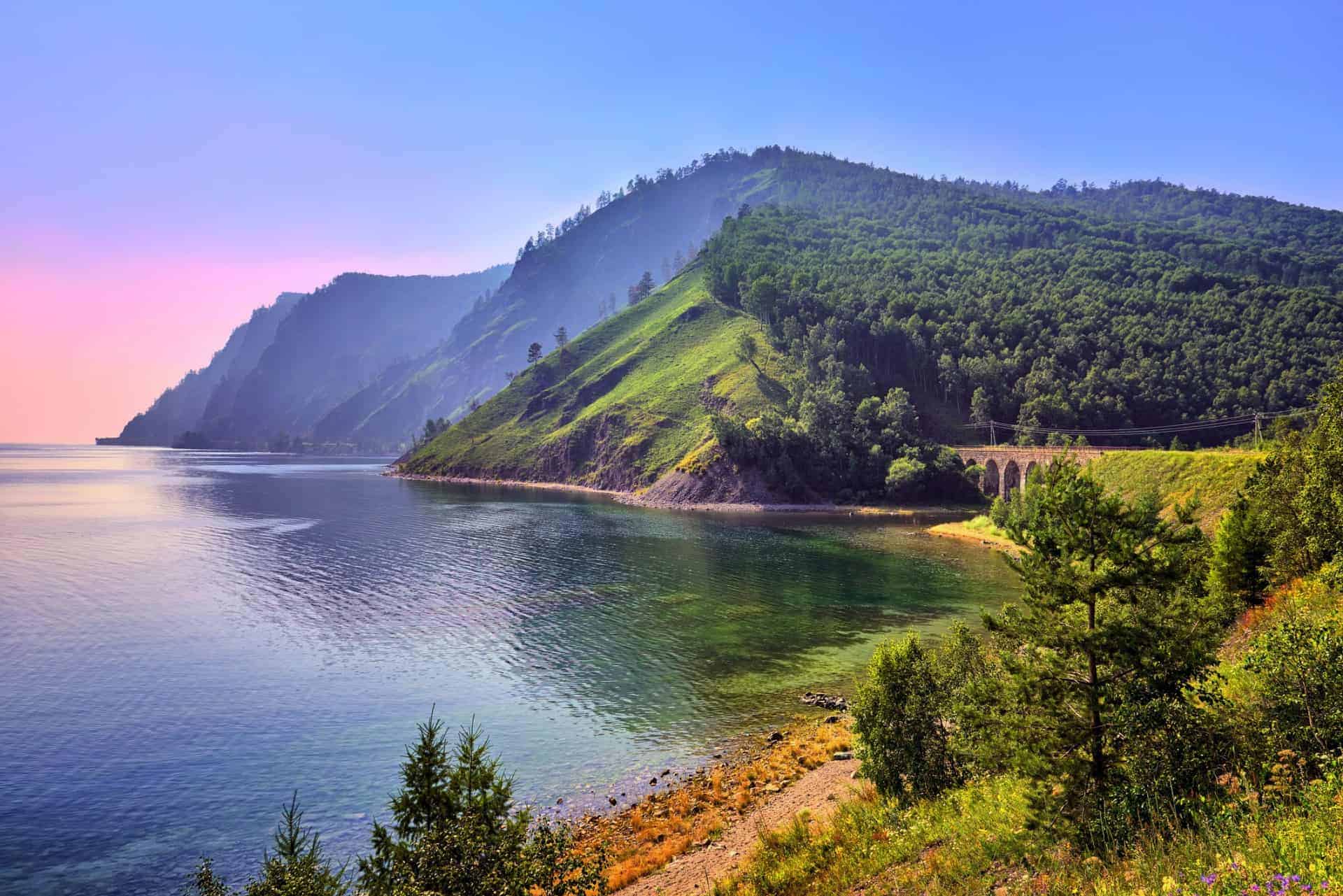
Lake Baikal: Exploring the World's Deepest Lake
An Antipodean travel company serving world travellers since 1983
Lake Baikal
Located deep within the heart of Siberia, Lake Baikal is one of the world’s most unique natural wonders. Baikal is the world’s oldest lake, formed around 25-30 million years ago, it is also the deepest and largest by volume, making up 20% of the world’s unfrozen fresh water. Located near the Russian city of Irkutsk, and right alongside the famous Trans-Siberian Railway, Lake Baikal is a unique destination for both travelers and nature lovers, boasting 1300 miles (2100 km) of coastline punctuated with beautiful scenery and pristine natural landscapes.
Flora and Fauna
Commonly referred to as the Galapagos of Russia, and listed as a UNESCO world heritage site since 1996, Lake Baikal is home to over 1000 species of plants and 2500 species of animals and fish, most of these are endemic, found nowhere else on earth. Among these is one of the world’s few species of freshwater seals, the Baikal seal, which can often be spotted sunning themselves on the rocks or shore during the warmer months of the year. The abundance of natural diversity, as well as the presence of a large seal population is a result of Lake Baikal being the among the world’s richest freshwater ecosystems.
History and Geography
Lake Baikal is situated in a seismically active region of Siberia known as the Baikal Rift Zone. Here the gradual drift between continental plates is responsible for the lake’s incredible depth (1642 m or 5387 ft), when the sediment layer beneath the lake is factored in this constitutes the deepest continental rift on earth. Some have even theorized that the gradual widening of the lake at 2cm (0.4 in) per year could be the protean stages of a new ocean being born. The lake’s water originates from a variety of 330 tributaries, the largest of which coming from the Selenga river in Mongolia. For most of its history, the region surrounding Baikal was inhabited by local indigenous communities, these were subject to the expansion of numerous powers including the Oirat Mongols and later the Russian Empire during the 17th century. Lake Baikal was also a notable site of the Han-Xiongnu wars, where the early Han recorded the great lake as the North Sea.
Visiting Lake Baikal
Lake Baikal has become a popular tourist destination in recent years, attracting roughly 500,000 visitors annually, being most popular among Eco-tourists as well as those travelling the Trans-Siberian Railway. There are two main seasons for visiting Lake Baikal, with the winter ice and summer thaw marking two very distinct experiences. During the winter period, generally mid-January till mid-April, the surface of the lake is iced over. This ice cover, despite being quite thick, up to 1.4m (4.6 ft) in places, is uniquely clear, revealing a stunning lattice of veins beneath the surface and makes for a dramatic photo opportunity. This ice begins to melt around May, with the southern half being the first to thaw. In the summer months, generally from June till September, the area is a more pleasant temperature for local outdoor activities such as hiking, camping or horseback riding, it is also the ideal time of the year to spot some of the Lake’s endemic wildlife. Temperatures around Lake Baikal are generally warmer than the surrounding taiga, however the continental climate can still fluctuate widely throughout the year, with averages ranging from -25C in the winter to 25C in the Summer (-13 F to 76 F), so it’s best to pack accordingly.
Articles about Russia Published by Odyssey Travel
- Trans-Siberian Railway History
- Trans-Siberian Landscape and Wildlife
- Early Russian History and its Key Figures
- Trans-Siberian Railway Travel Advice
- Eight Amazing Rail Journeys
For all the articles Odyssey Traveller has published for mature aged and senior travellers, click through on this link.
External articles to Assist you in your visit to Russia
Related Tours
-
Helsinki to Irkutsk on the Trans-Siberian Railway
Escorted tour on the Trans-Siberian railway network from West to East starting in Helsinki and finishing in Irkutsk after 21 days. This is small group travel with like minded people and itineraries that maximise the travel experience of the 6 key destinations explored en-route. Our small group journeys are for mature couples and solo travellers.
-
Irkutsk to Helsinki on the Trans-Siberian Railway
Escorted tour on the Trans-Siberian railway network from East to West starting in Irkutsk and finishing in Helsinki after 21 days. This is small group travel with like minded people and itineraries that maximise the travel experience of the 6 key destinations explored en-route. Our small group journeys are for mature couples and solo travellers.
-
Journey through Mongolia and Russia small group tour
This escorted small group tour traverses this expanse, from Ulaanbaatar to St Petersburg; from the Mongolian Steppes to Siberian taiga and tundra; over the Ural Mountains that divide Asia and Europe to the waterways of Golden Ring. Our program for couples and solo travellers uses two of the great rail journeys of the world; the Trans Mongolian Express and the Trans Siberian Express.
-
Krasnoyarsk to Vladivostok on the Trans-Siberian Railway
Mature and solo travelers group Travel on the Trans-Siberian Railway for 22 days covering the second half of the Trans-Siberian journey, from Vladivostok to Krasnoyarsk to Vladivostok on the edge of Siberian Russia Small group journeys with a tour leader, explores 5 key cities with local guides providing authentic experiences in each with stops of 2-3 nights.
22 days -
Vladivostok to Krasnoyarsk on the Trans-Siberian Railway
Mature and solo travelers group Travel on the Trans-Siberian Railway for 22 days covering the second half of the Trans-Siberian journey, from Vladivostok to Krasnoyarsk in the heart of Siberian Russia Small group journeys with a tour leader, explores 5 key cities with local guides providing authentic experiences in each with stops of 2-3 nights.
22 days
